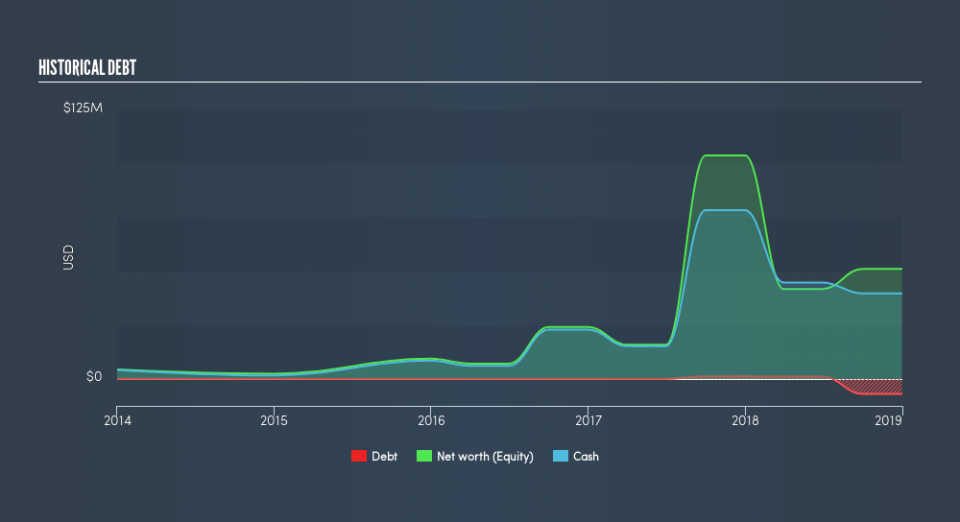Is Fluence (ASX:FLC) A Risky Investment?

Legendary fund manager Li Lu (who Charlie Munger backed) once said, 'The biggest investment risk is not the volatility of prices, but whether you will suffer a permanent loss of capital.' It's only natural to consider a company's balance sheet when you examine how risky it is, since debt is often involved when a business collapses. As with many other companies Fluence Corporation Limited (ASX:FLC) makes use of debt. But the real question is whether this debt is making the company risky.
What Risk Does Debt Bring?
Debt is a tool to help businesses grow, but if a business is incapable of paying off its lenders, then it exists at their mercy. Ultimately, if the company can't fulfill its legal obligations to repay debt, shareholders could walk away with nothing. However, a more usual (but still expensive) situation is where a company must dilute shareholders at a cheap share price simply to get debt under control. Of course, the upside of debt is that it often represents cheap capital, especially when it replaces dilution in a company with the ability to reinvest at high rates of return. When we examine debt levels, we first consider both cash and debt levels, together.
Check out our latest analysis for Fluence
How Much Debt Does Fluence Carry?
As you can see below, Fluence had US$368.0k of debt at December 2018, down from US$1.15m a year prior. However, its balance sheet shows it holds US$39.6m in cash, so it actually has US$39.3m net cash.
How Strong Is Fluence's Balance Sheet?
Zooming in on the latest balance sheet data, we can see that Fluence had liabilities of US$80.1m due within 12 months and liabilities of US$10.7m due beyond that. Offsetting this, it had US$39.6m in cash and US$33.5m in receivables that were due within 12 months. So its liabilities total US$17.6m more than the combination of its cash and short-term receivables.
Since publicly traded Fluence shares are worth a total of US$169.8m, it seems unlikely that this level of liabilities would be a major threat. Having said that, it's clear that we should continue to monitor its balance sheet, lest it change for the worse. While it does have liabilities worth noting, Fluence also has more cash than debt, so we're pretty confident it can manage its debt safely. When analysing debt levels, the balance sheet is the obvious place to start. But it is future earnings, more than anything, that will determine Fluence's ability to maintain a healthy balance sheet going forward. So if you're focused on the future you can check out this free report showing analyst profit forecasts.
Over 12 months, Fluence reported revenue of US$101m, which is a gain of 205%. When it comes to revenue growth, that's like nailing the game winning 3-pointer!
So How Risky Is Fluence?
We have no doubt that loss making companies are, in general, riskier than profitable ones. And the fact is that over the last twelve months Fluence lost money at the earnings before interest and tax (EBIT) line. Indeed, in that time it burnt through US$53m of cash and made a loss of US$64m. Given it only has net cash of US$40m, the company may need to raise more capital if it doesn't reach break-even soon. Importantly, Fluence's revenue growth is hot to trot. High growth pre-profit companies may well be risky, but they can also offer great rewards. When I consider a company to be a bit risky, I think it is responsible to check out whether insiders have been reporting any share sales. Luckily, you can click here ito see our graphic depicting Fluence insider transactions.
Of course, if you're the type of investor who prefers buying stocks without the burden of debt, then don't hesitate to discover our exclusive list of net cash growth stocks, today.
We aim to bring you long-term focused research analysis driven by fundamental data. Note that our analysis may not factor in the latest price-sensitive company announcements or qualitative material.
If you spot an error that warrants correction, please contact the editor at editorial-team@simplywallst.com. This article by Simply Wall St is general in nature. It does not constitute a recommendation to buy or sell any stock, and does not take account of your objectives, or your financial situation. Simply Wall St has no position in the stocks mentioned. Thank you for reading.

 Yahoo Finance
Yahoo Finance 
